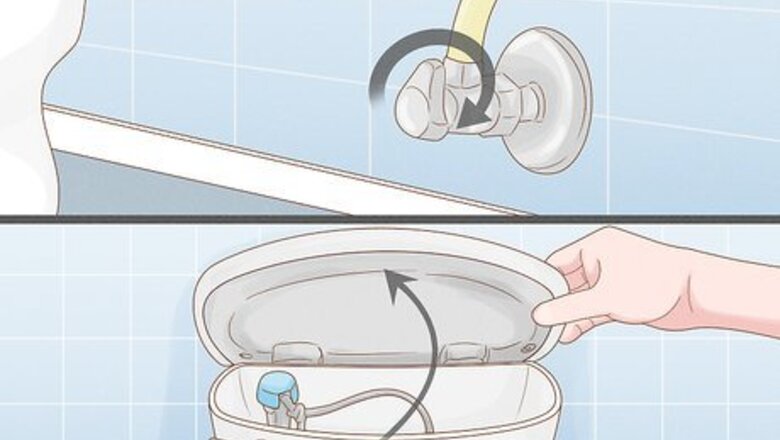
views
- Take the lid off of your toilet and unclip the chain on the end of the metal or plastic lever connected to your handle.
- Turn the mounting nut on the handle clockwise by hand or with locking pliers to loosen it. Then, pull the handle and lever out of the tank.
- Get a new handle that matches your toilet and bathroom fixtures. Slide the handle and lever into your toilet tank.
- Tighten the mounting nut on the inside of the tank by turning it counterclockwise. Then clip the chain to a hole on the end of the lever to finish.
Removal
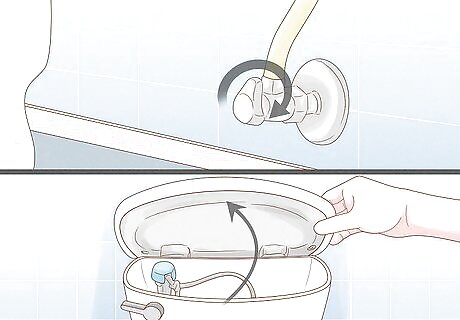
Remove the toilet tank's lid and undo the chain clip attached to the lever. Carefully lift the lid off the top of your toilet's tank so you can access the inside and set it on a towel (so it doesn't scratch your floors). Locate the chain clip in the middle of your toilet tank; find the section of chain clasped to the end of a metal or plastic lever running back to the handle. Undo the clasp. Hang the clasped end of the chain over the side of the toilet or the vertical overflow pipe so you don’t have to reach into the water to reattach it. If your toilet lever doesn’t have a chain, then look for a small plastic box on the vertical flapper valve that the lever goes through. Simply rotate the flapper assembly away from the lever so you can slide it out.
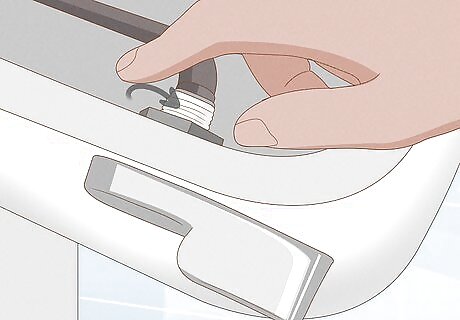
Unscrew the handle’s mounting nut inside the toilet tank. Locate the plastic or metal mounting nut inside of your toilet tank where the handle connects to it. Mounting nuts are reverse-threaded, which means they loosen when you turn them clockwise. When you’re looking at the nut from inside the tank, then try turning it clockwise by hand. If the nut won’t move, grip it with a pair of locking pliers to get better leverage. Once you get the nut loose, slide it down toward the end of the handle to remove it. Avoid turning the mounting nut counterclockwise since you could strip the threading and make it more difficult to remove. If you’re trying to remove a damaged nut, try filing 2 sides of it smooth so you can get a better grip with your pliers. Many mounting nuts have a black rubber O-ring attached to them, which prevents leaks from coming through the handle. If the O-ring is a separate piece from the mounting nut, make sure you remove it as well.
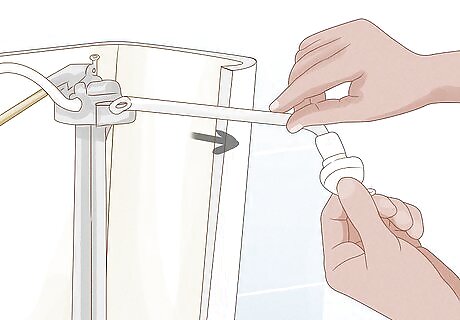
Pull the old handle out from the toilet tank. Without the nut or chain holding it in place, simply pull the handle straight out from the toilet. Maneuver the handle around so the lever slides through the hole in the top of your tank. Once you get the handle out, you can throw it away in the trash. You may be able to unscrew the lever from the handle to make it easier to remove. Check if there are any screws on the lever assembly and use a screwdriver to undo them. Your new toilet handle will have a lever included, so you don't need to save the old one.
Installation
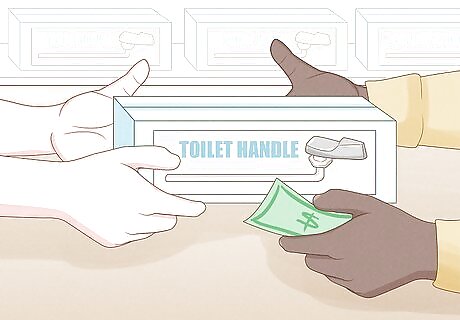
Purchase a new toilet handle. Toilet handles come with a lever and mounting nut in the package. You can either buy a handle for your specific toilet brand, or you can get a universal handle that fits most toilets. Try to find a handle that matches the fixtures in your bathroom so your bathroom has a nice, uniform look.
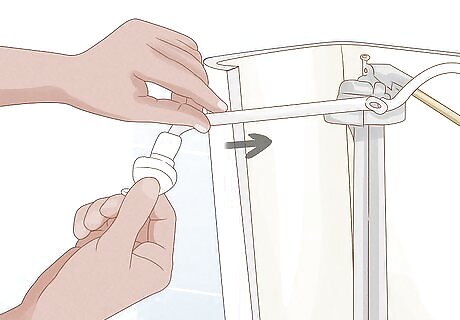
Slide the handle lever into the toilet tank. Put the end of the lever through the hole at the top of your tank where the handle goes. Feed the lever into your toilet tank so it reaches toward the chain clip in the middle of your tank. Push the base of the handle tightly against the side of your toilet tank when you finish sliding in the lever. Keep one hand inside the tank to guide the lever to the right spot and leave your other hand outside so you can feed the lever in. If the lever angles over the edge of the tank, carefully bend it with your fingers toward the middle of your toilet tank.
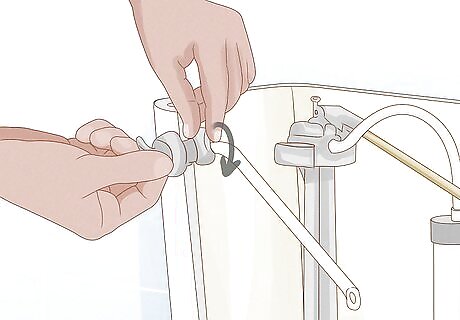
Slide the mounting nut onto the lever and screw it in. If the new handle has a separate O-ring, feed it onto the lever first. Put the mounting nut on the end of the lever and feed it up so it presses against the inside of the toilet tank. When you reach the threading on the back of the handle, tighten the nut by hand by turning it counterclockwise. Then, give the nut a final quarter-turn with your locking pliers to ensure it stays tight. Be careful not to overtighten the mounting nut since you could strip the threading and make it more difficult to replace later on.
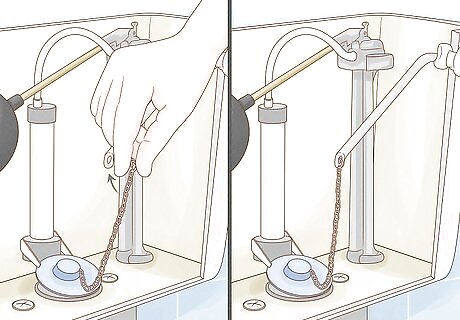
Attach the chain to the lever so there's 1 in (2.5 cm) of slack. The end of the lever usually has 2-3 holes to reattach your chain clip. Open the clasp on the chain and loop the clip through one of the holes. Make sure the chain has a little bit of slack so the flapper can open and close properly. Make sure the chain isn't caught or wrapped around anything before you clip it, or else your handle may get stuck. If your toilet doesn’t have a chain, slide the lever through the middle of the plastic box on the flapper assembly. Turn the assembly so the box is perpendicular to the lever.
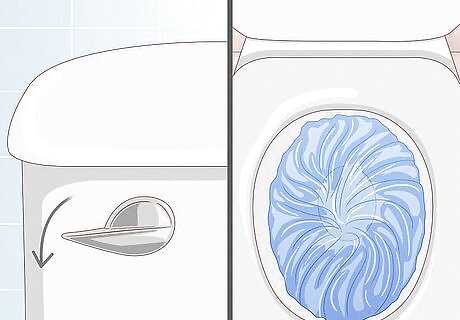
Flush your toilet to test your new handle. Keep the lid off of your tank so you can watch the handle lever. Try flushing your toilet with your new handle to make sure it works properly. Pay attention to if the handle gets stuck or if the flapper at the base of the tank doesn’t close all the way. If your toilet runs fine, then you can set the lid back on your tank and finish your repairs.
Troubleshooting
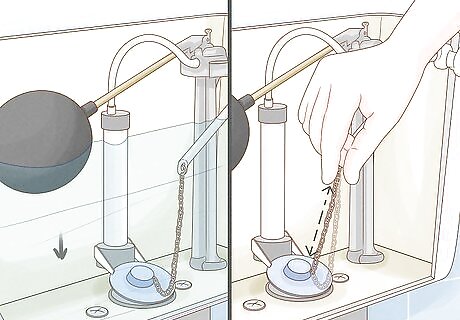
Shorten the flapper chain if your toilet doesn’t flush completely. If only part of your tank empties when you flush, the flapper isn’t opening all of the way. Try using a lower link on the chain or attaching the chain to a hole closer to the handle. Flush your toilet again and watch the flapper to make sure it opens up completely. A long chain clasp could also get stuck underneath the flapper when it opens, which will break the seal and make your toilet run.
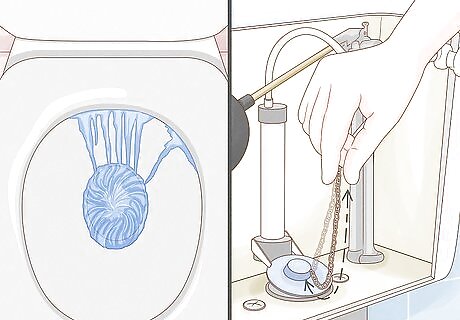
Lengthen the chain if your toilet keeps running. If the chain is too short, it will hold the flapper valve slightly open so water keeps running to the bowl. Use a link higher up on the chain, or clasp it to a hole closer to the end of the lever to add a little more slack to it. Then, flush your toilet to make sure the flapper closes all of the way. If the flapper looks old or cracked, then you may need to replace it.
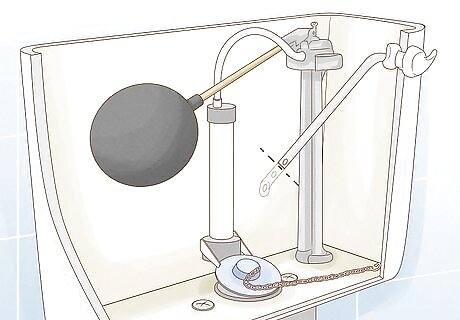
Trim a lever that’s too long with a hacksaw. Most handle levers are short enough to fit inside a toilet tank, but there may be times when it bumps the toilet lid and doesn’t flush completely. Take the handle and lever out of your toilet. Then, slowly cut about 1–2 in (2.5–5.1 cm) off the end of the lever. Reinstall the lever and handle back into your toilet and try flushing it again to see if you need to cut off more.



















Comments
0 comment